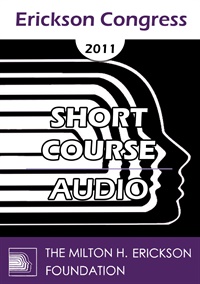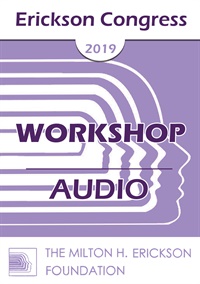
- Average Rating:
- Not yet rated
- Topic Areas:
- Special Topics | Hypnosis | Ericksonian Hypnosis and Therapy Techniques | Fundamentals of Hypnosis | Psychotherapy | Truisms | Age Regression | Hypnotic Phenomena | Post-Hypnotic Suggestion | Suggestion | Metaphors
- Categories:
- Brief Therapy Conference | Brief Therapy Conference 2018
- Faculty:
- Brent Geary, PhD
- Duration:
- 5:14:31
- Format:
- Audio Only
- Original Program Date:
- Dec 05, 2018
- Short Description:
- This workshop will provide participants with an introduction to the key concepts and techniques of practice in Ericksonian hypnosis. A brief biography of Erickson’s professional life will provide perspective on the extensive contributions he made to the fields of hypnosis and psychotherapy. Terminology of hypnosis will be explained and various approaches to induction will be described and demonstrated. The process of a typical hypnotic session will be outlined. Considerable attention will be afforded the hypnotic phenomena, the essential mechanisms in hypnotic therapy. Erickson’s landmark concepts of utilization and indirection will be explored with particular focus on the use of therapeutic anecdotes and metaphors.
- Price:
- $15.00 - Base Price

- Average Rating:
- Not yet rated
- Topic Areas:
- Short Courses | Goals of the Therapist | Hypnosis | Post-Hypnotic Suggestion | Suggestion
- Categories:
- Erickson Congress | Erickson Congress 2011
- Faculty:
- Jose Cava Roda, Lic. Psychologist | José Cava, Lic Psychologist
- Duration:
- 1:34:42
- Format:
- Audio Only
- Original Program Date:
- Dec 09, 2011
- Short Description:
- The probability that posthypnotic suggestions will be carried out is highly increased by associating them to the client’s daily life events or activities with an analogical or metaphorical relationship to the therapeutic goals. These life events or activities work as a frequently available signal that facilitates the in-tended behavior or response.
- Price:
- $15.00 - Base Price

- Average Rating:
- Not yet rated
- Topic Areas:
- Workshops | Obsessive Compulsive Disorder (OCD) | Hypnosis | Post-Hypnotic Suggestion | Suggestion
- Categories:
- Erickson Congress | Erickson Congress 2019
- Faculty:
- Krzysztof Klajs, Dipl. Psych
- Duration:
- 1 Hour 57 Minutes
- Format:
- Audio Only
- Original Program Date:
- Dec 15, 2019
- Short Description:
- OCD is a rather chronic illness affecting about 2.5% of adults. Its diagnosis is perceived as a demanding and challenging one. Trance phenomena can be described as natural behavioral manifestations of the trance state. They can be observed in individuals as well as in family communication patterns. In OCD families, one of the most powerful and widely present trance phenomena are the posthypnotic suggestions. They are invisible, deeply hidden, mighty and long lasting.
- Price:
- $15.00 - Base Price

